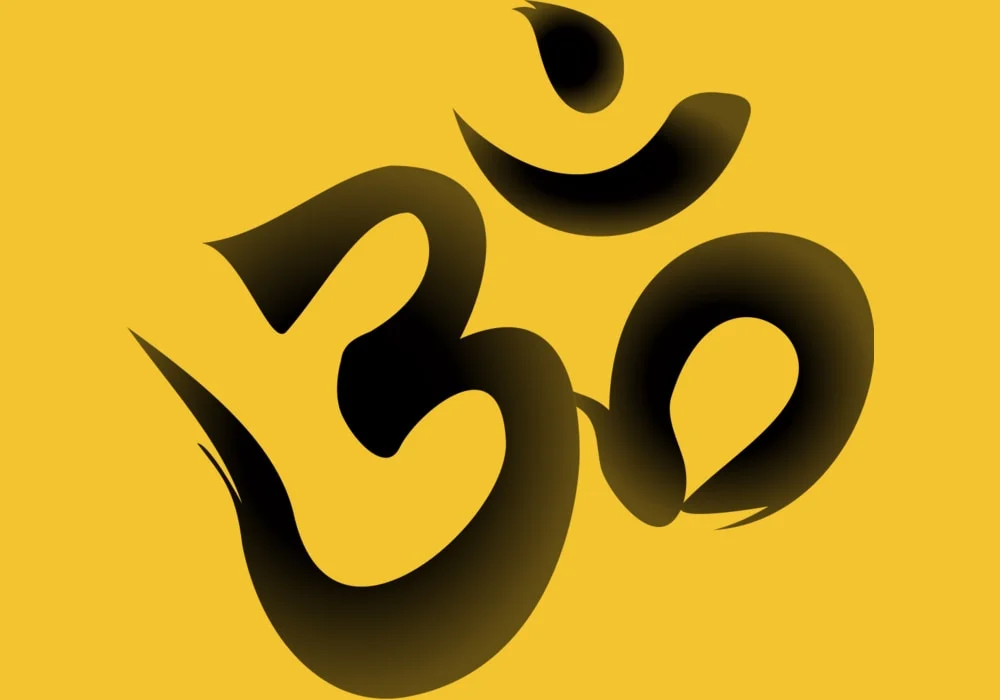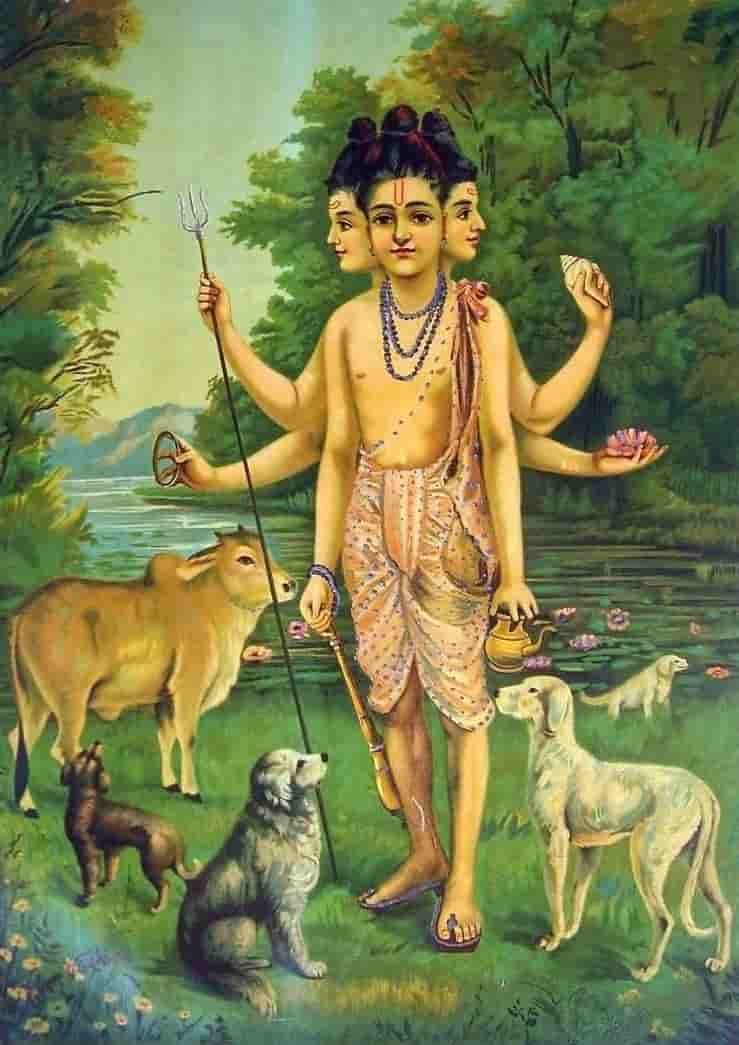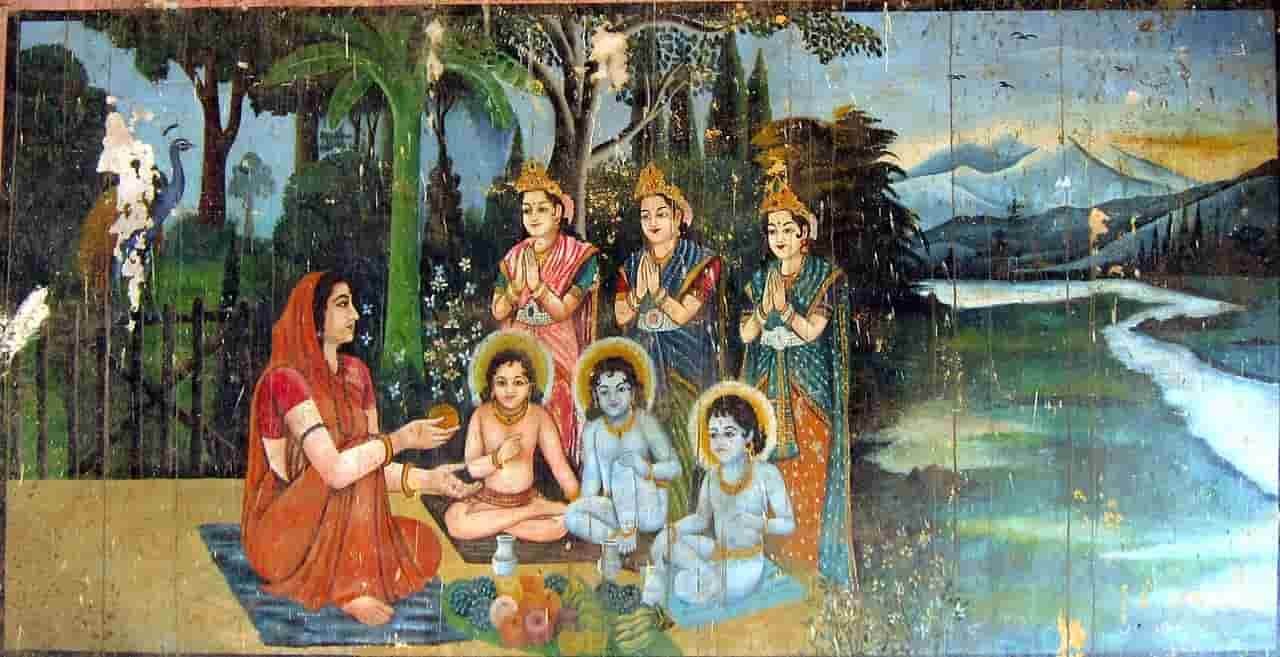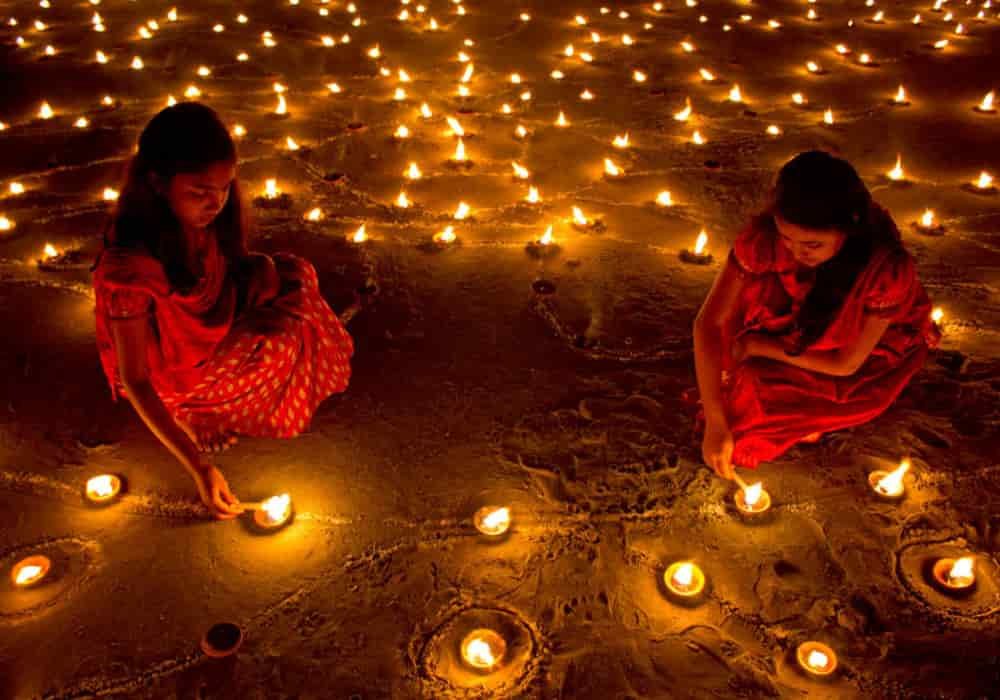Hinduism – History, Hindu God, Shiva, Mythology, Worship and Spirituality
Hinduism is one of the major religions of Asia, it is at the origin of other great Eastern beliefs such as Buddhism for example. Not necessarily well known in the West, she particularly fascinates me and inspires me in my everyday life. As the knowledge and content of Hinduism is very vast, we will limit to a good introduction and if you want to go further, we will end our article with this song (Om Shreem Hreem) which would remove the obstacles in your path to attain enlightenment!
Hinduism – History
The Etymology of the word Hinduism is of Persian origin. Hindu, refers to the Indus River which originates in Tibet (Himalayas) and flows into the Arabian Sea. Literally, therefore, Hinduism is the religion of the inhabitants of the land of the Indus. Hinduism is sometimes called Sanatana Dharma, the “eternal law” or “the eternal socio-cosmic order” in Sanskrit.
It is one of the oldest religions in the world. Practiced by millions of people, it is in the 3rd position of the most practiced religions after Christianity and Islam. Unfortunately, sources are lacking to determine the exact time of its appearance. The task is further complicated by the fact that Hinduism arguably arose out of a mixture of various beliefs. Indeed, one of its peculiarities is that it was not created by the preaching of an individual, but rather by the accumulation of customs of different populations who met during their migration to present-day India. . Vedism, which dates from the 17th century BC, is one of those ancestral beliefs that significantly influenced what Hinduism is today.
Hindusim – Fundamentals
You will tell me, the first thing that defines the Hindu religion is its polytheistic aspect. But is she really? Indeed, this question may be surprising given the number of gods in the Hindu pantheon. However, the conception of a god symbolizing purity and perfection does not exist among all the different deities but is rather shared in each of these same deities. The divine qualities would therefore not be carried by a single entity but would be reflected in several higher beings. So I think the term polytheist is poorly chosen, reductive and often confusing. The basis of Hinduism is the idea that in their multitude, the phenomena around us are only the various manifestations of ultimate reality. This reality, called Brahman, is the unifying idea which gives Hinduism its essentially monistic (one god) character despite the worship of many gods and goddesses.
Brahman, also called Sang Hainag or Uptepi, is the ultimate reality. It is the ultimate inner essence, the creative divinity of all things. It is infinite beyond all concepts. It cannot be understood by intelligence, nor can it be adequately described in words. The creative activity of divinity is called Lila, the game of God. The world is seen as the scene of a divine game. The myth of Lila has a strong magical connotation, Brahman being the great magician who turns himself into a world. We therefore understand by this that for Hindus, divine power is present everywhere, including in us.
It should be understood that the divine Lila is a dynamic and rhythmic game. And this is what gives the world both a cohesion around this creative energy and at the same time an aspect in perpetual motion.
The dynamic force of divine play is karma, another important concept in Hindu thought. Karma means action, it is the active principle of the game. The whole universe is in motion and everything is in dynamic relation with the other. To free oneself from the bonds of Karma means to realize the unity and harmony of all nature, including the human being, and to act accordingly.
Read also: Diwali the festival of lights for Hindus | The history and customs
Breaking free and breaking the chains of Karma means realizing that all the things we perceive through our senses are part of the same reality. Everything is Brahman and Brahman is the whole. Realizing this universal truth causes us to attain a state of awakening and knowing, which is called Moksha (liberation). We find the same principles in Buddhism with the concept of Nirvana, very similar to that of Moksha.
Hinduism – The Hindu Trimūrti (Trinity)
As in the Christian trinity (the father, the son and the holy spirit), the Hindu pantheon is dominated by 3 deities:
1. Brahma
The god Brahma, not to be confused with Brahman (the supreme being), Brahmâ is the creator god of matter and the universe. It arises from a lotus flower emerging from Vishnu’s navel. Despite his importance in the Hindu trinity, he is little worshiped in India. Brahmâ passes for the son of the Supreme Power, Brahman, and the feminine energy known as Prakrti or Mâyâ.
When Brahma created the universe, it remained unchanged until it was then consumed by fire, but the sages, gods, and elements will survive. When he awakens, Brahma restores creation again, and this process will repeat itself for a long time. When this is over, the entire universe, gods, sages and living beings will be reduced to their constituent parts.
Despite its hierarchical importance, it is little revered by Hindus. The only large temple dedicated to him is in Pushkar in Rajasthan where thousands of pilgrims come to bathe in its lake. A temple was also dedicated to him at Angor Wat in Cambodia.
2. Shiva
Both beneficent and destructive, Shiva (or Civa or Siva), is the most revered of the gods. He is a complex and contradictory character. Indeed, it represents destruction but it is aimed at creating a new and better world. The world holds a fragile balance between the forces of good and evil, when the balance breaks, Shiva dissolves the universe in order to create a new one in which men can free themselves from the alienation of the physical world.
His eyes are half closed because he opens them during the creation of the world and closes them to end the universe and start a new cycle. He is often depicted with a third eye in the middle of the forehead. Symbol of eternity and wisdom, this 3rd eye gives him a transcendent vision of the world.
The Shaiva tradition of Hinduism, thus centered on the god Shiva, is one of the most influential variants of Hinduism along with the Vishnu tradition.
3. Vishnu
Vishnu is the god of the stability of the world, he maintains life and creation. He is the god of time. Vishnu is also known as Hari. He is often seen sleeping, but in his sleep he is actually preparing the next world. He is a protector of humans and a savior. He cannot intervene directly in the events, he is then embodied in an avatar.
Vishnu is often depicted as a blue man with a royal adornment and four arms, usually holding a wheel or chakra, a conch or shankha, a lotus (padma) and a club (gada) in his hands. He wears a golden tiara on his head, called a kirita-mukuta.
In this article, I will limit myself to the presentation of the 3 main gods of Hinduism, but be aware that there are many others not less interesting. At the end of the article, I give you a list of great books that will introduce you to more.
Hinduism – The holy books
As Hinduism derives its source from Vedism, the main holy writings are Veda, called Shruti (revelation) for the ancient texts and Smirti (memory) for the more recent. All of these writings were written in Sanskrit.
As the caste system limited access to these books, the Shruti were reserved primarily for the Brahman caste. The Smirti books, on the other hand, were distributed quite widely, thus becoming the popular literature of Hinduism.
The Hindu texts include several groupings of texts but always in our objective of synthesis, we will focus only on the 3 main books which are part of the group of Itihasas.
1. The Mahabharata
“The Great History of Bharata” is a collection of 18 books which poetically recounts the war between the Kauravas (symbolizing the forces of evil) and the Pandavas (symbolizing good). A bit like the fables of La Fontaine, a moral emerges from each chapter of this epic. One of the foundations of Hinduism is the lessons that can be learned from the Mahabharata. Note that since the dawn of time, storytelling has proven to be very effective in transmitting knowledge and giving life lessons to a large group of people. This technique will also be used in Greek mythology for example.
Originally, the Mahabharata was transmitted orally during every ceremony or religious holiday. Manuscripts were then written between -400 and 400 AD, but the recitation and hearing of verses of the Mahabharata remains a widespread custom to this day.
Finally, despite the sanctity of the Mahabharata epic, many modern adaptations have been made. In the form of plays or even films, the adventures of the Pandavas and Kauravas are very successful in India. And as long as we stay consistent with the original texts, I find it a great way to pass on such valuable knowledge to our modern societies.
2. The Bhagavad Gita
Literally the “song of the Blessed Lord”, the Bhagavad Gita is widely regarded as the main book of Hinduism. Composed of 18 songs, it relates a dialogue between Arjuna a Pandava prince and Krishna.
Krishna, representative of God, relates that the divine essence is present throughout the entire universe. He says in part: “Having imbued the entire universe with a part of myself, I remain.”
Many philosophers, even in the West, consider the Bhagavad Gita to be the greatest book that man has ever written.
It transmits the fundamental teachings of Hinduism and gives the 3 paths to adopt to draw closer to God:
Karma-yoga, the discipline of acts: We have the right to act, but our acts should not be performed for the purpose of subsequent reward. Our actions must be selfless, without expectation of results.
Jnana-yoga, knowledge: Knowledge here refers to the realization of the unity of the universe. It is the realization that our body and the world as it is conceived is only a limited vision given by our 5 senses. Krishna reveals to Arjuna that the individual soul (Atman) is eternal and indestructible: it cannot kill nor be killed and its nature is identical with the Universal Spirit (brahman) which is at the heart of all phenomena. This awareness, revealed through meditation, is a source of liberation.
Bhakti-yoga, devotion: All action must be offered to God with sincere devotion. Moreover, in Hinduism, being content with what one has is a virtue that leads to wisdom.
3. The Ramayanha
Composed of 7 books, the Ramayana means “the journey of Rama”, the 7th incarnation of Vishnu. Rama, the legitimate heir, is condemned to exile with his wife Sita and his brother Lakshmana. After her exile, Sita is kidnapped by the demon Ravana. With an army of monkeys and bears, Rama fights and manages to defeat Ravana and at the same time delivers his wife Sita. After all these adventures, he finally finds his throne and rules with wisdom thanks to the teachings brought to him by his exile.
Once again, Hindu teaching is transmitted here through the decisions Rama made during his journey. Following Rama’s example in his daily life is considered a sacred act that leads to wisdom.
Hindu Symbol – The Om
We come to the last paragraph before we give you advice on books to discover on Hinduism. The Om sound is an important sacred component of Hinduism and this sound is also found in other beliefs such as Buddhism for example. So what is this mysterious “Om”? It actually corresponds to the original vibration that would have structured the entire universe. And yes, more than 2000 years ago, men had already intuitively understood the probable existence of some kind of Big Bang!
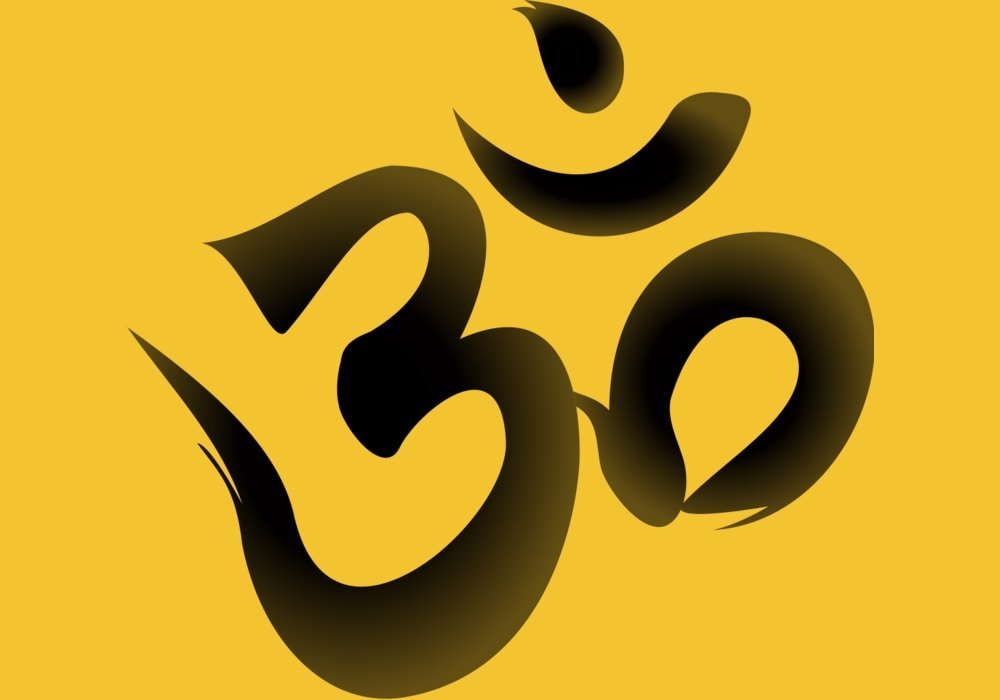
Om is the symbol of Brahma, the creator god, who by this original sound created the world and subsists in the whole by means of this vibration. Om is our direct link with the divine.
I’m sure you’ve seen monks make that “ommmm” sound during a prayer. It is actually a meditation technique that uses what is called a mantra, a sound or word that is repeated to fix our attention on the sound in question and clear its mind. By repeating the original sound while meditating, we would bring out the ultimate vibration from the depths of our being.
Coming back to the mantra, I especially love the one in this song (Om Shreem Hreem) which would remove the obstacles in your path to attain enlightenment: Om Shreem Hreem
Saffron color
The most sacred color for the Hindu saffron. Represents fire and as impurities are burnt by fire, this color symbolizes purity. It also represents religious abstinence. This color connotation has a sacred meaning for the Hindu.
Thanks again for reading the entire article, I hope I taught you the basics about Hinduism. As always, feel free to share the article with everyone you know. And if you have any questions, it’s in the comments that it’s in.
Sources: PinterPandai, PinterPandai, United Religions Initiative, Britannica, The Pluralism Project (Harvard University)
Dattatreya | Incarnation of the Trimurti (Hindu’s 3 Main Gods: Brahma, Vishnu and Shiva)
